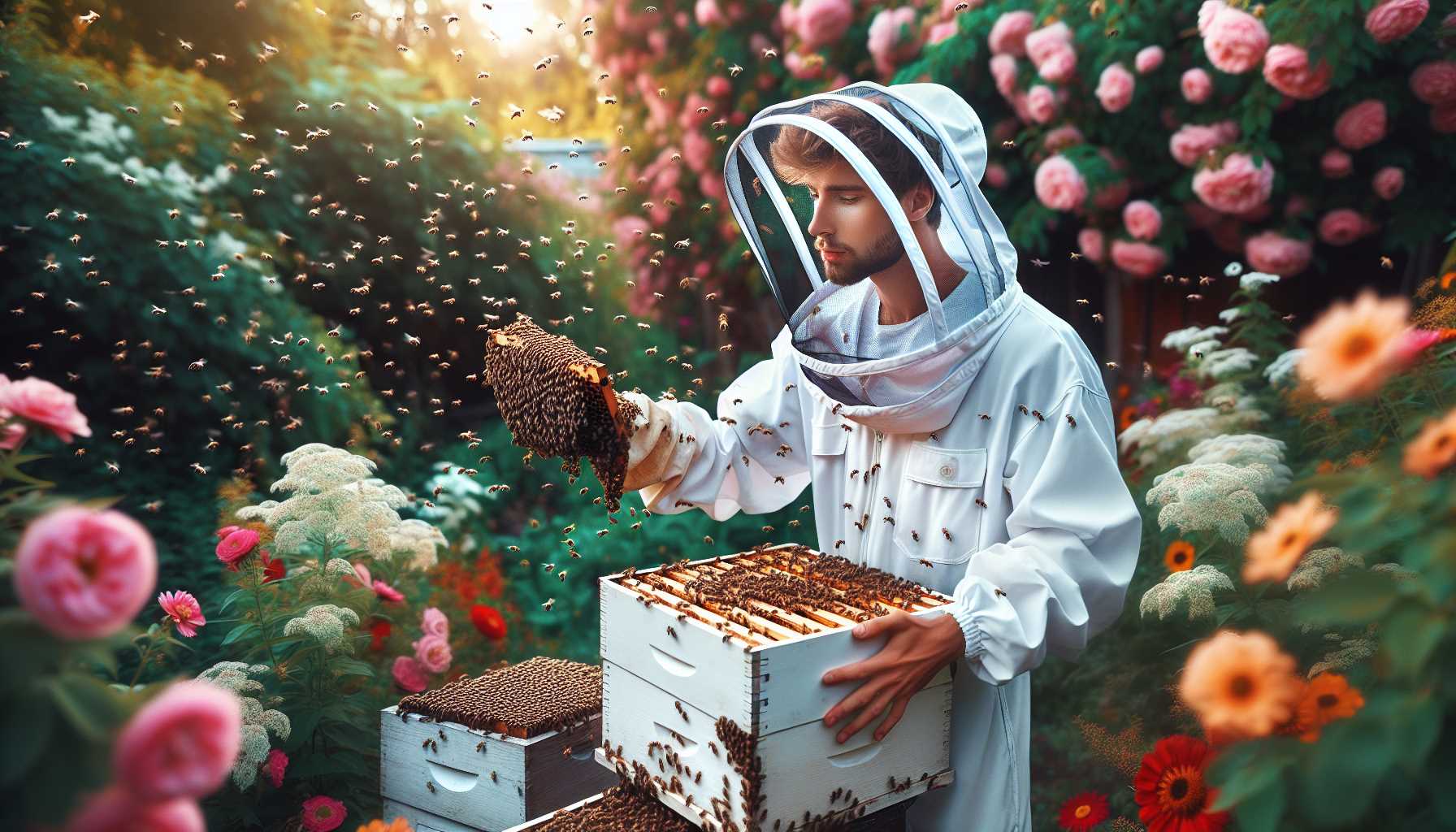Aspiring beekeepers often find themselves intrigued by the world of beekeeping, yet navigating the complexities of setting up a beehive can be a daunting task. Understanding the fundamentals is crucial for success, from selecting the appropriate hive to maintaining it throughout the seasons.
In this guide, we will explore key considerations such as hive placement, equipment essentials, and troubleshooting common issues that may arise. By grasping these foundational aspects, beginners can establish a solid groundwork for their beekeeping journey.
Key Takeaways
- Choose the right hive material for insulation, durability, or thermal regulation.
- Understand bee behavior through communication, foraging patterns, and specialized roles.
- Equip yourself with essential gear like a bee suit, hive tool, smoker, and feeders.
- Maintain hive placement, conduct regular inspections, and manage issues like overcrowding and pests.
Choosing the Right Hive

When delving into the world of beekeeping, selecting the appropriate hive is an essential first step that will greatly influence the success of your apiary endeavors. Hive materials play a crucial role in providing a safe and conducive environment for your bees to thrive. Common hive materials include wood, plastic, and polystyrene. Wooden hives are traditional and offer good insulation, while plastic hives are durable and easy to clean. Polystyrene hives are lightweight and provide excellent thermal regulation.
Once you have chosen the hive material that suits your needs, the assembly process comes into play. Assembling a hive can be a rewarding experience that allows you to connect with your bees even before they arrive. Follow the manufacturer’s instructions carefully, ensuring that each component fits snugly together. Pay attention to details such as frame spacing and entrance size, as these can impact the bees’ behavior and overall productivity of the colony. By taking the time to select the right hive materials and master the assembly process, you are setting the stage for a successful beekeeping journey filled with freedom and fulfillment.
Understanding Bee Behavior
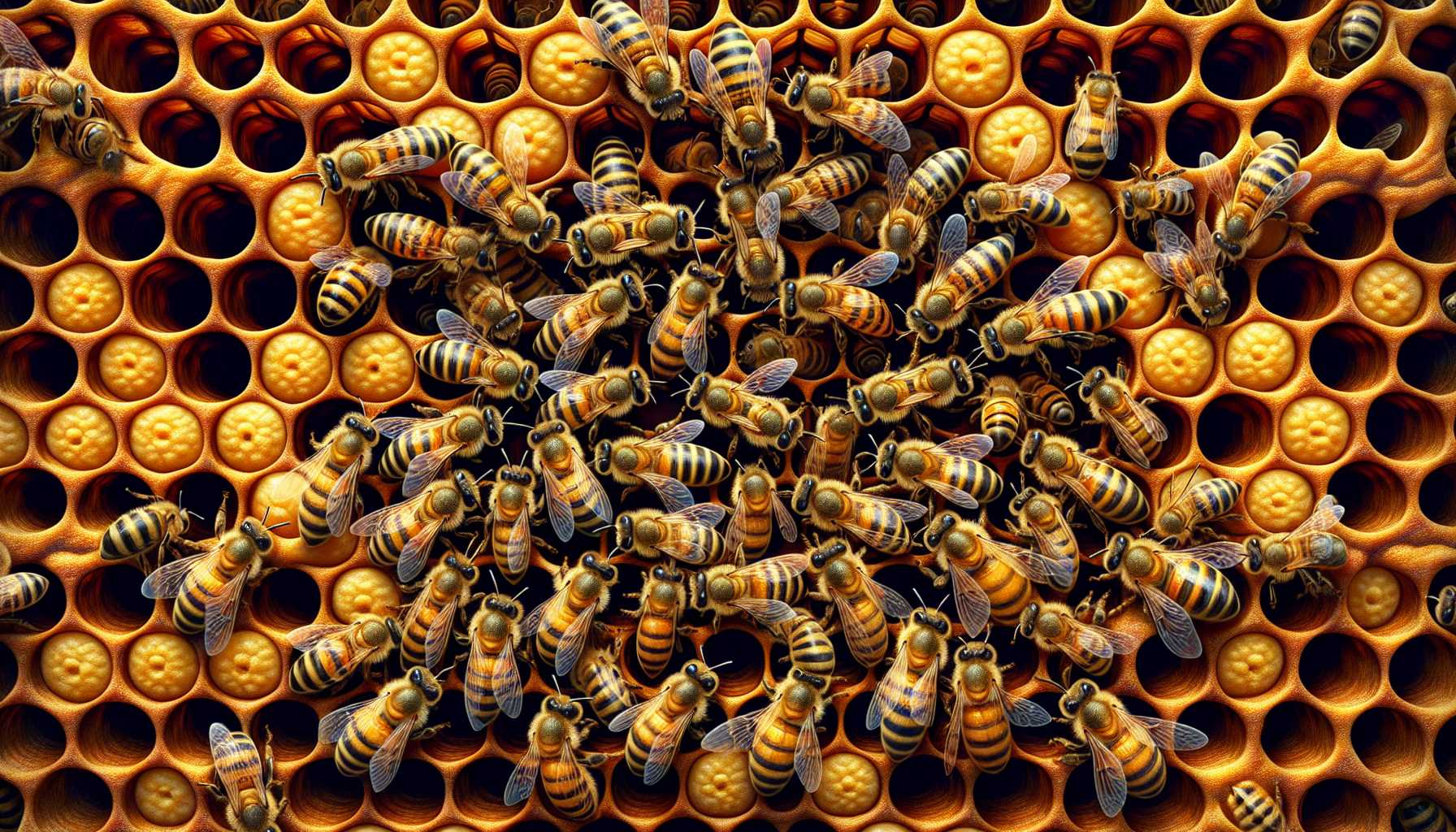
Understanding bee behavior is a fundamental aspect of beekeeping that empowers beekeepers to anticipate, interpret, and respond effectively to the intricate workings of a bee colony. Bees communicate vital information through their famous ‘bee dance,’ a complex movement that conveys the location and quality of food sources. By observing and understanding this dance, beekeepers can gain insights into the bees’ foraging patterns and preferences, enabling them to make informed decisions about hive management and location choices.
Foraging patterns play a crucial role in the overall health and productivity of a bee colony. Bees exhibit remarkable efficiency and organization in their foraging efforts, with different bees specializing in collecting pollen, nectar, water, or propolis. By recognizing and respecting these specialized roles, beekeepers can support the colony’s natural processes and ensure a thriving and harmonious environment for their bees.
Essential Beekeeping Equipment
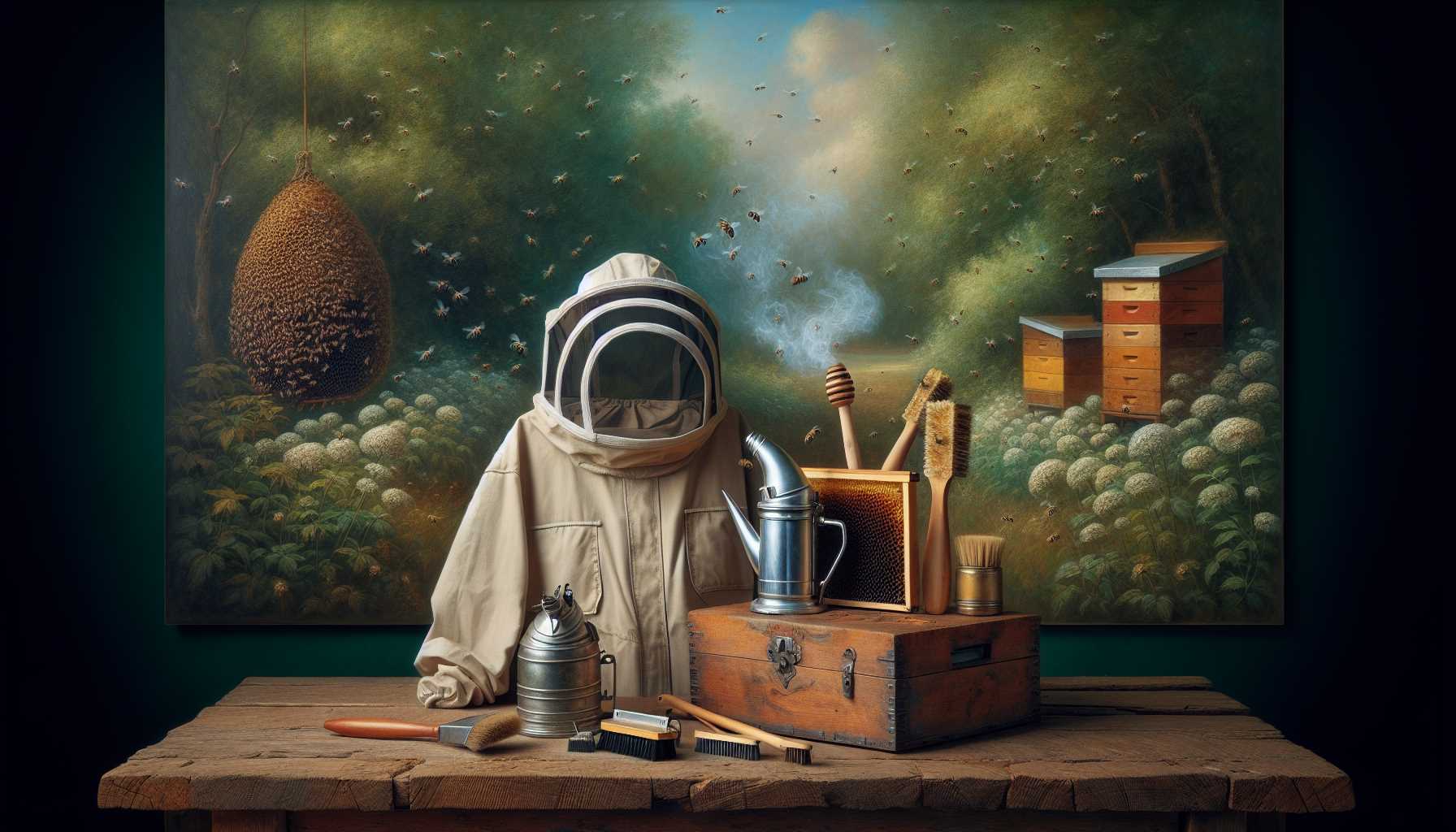
To excel in beekeeping and ensure the successful management of a bee colony, acquiring essential beekeeping equipment is paramount. Here are key items every beginner beekeeper should have:
- Bee Suit Essentials: A well-fitting bee suit is crucial to protect yourself from stings while working with the bees. It typically includes a protective jacket or suit, gloves, and a veil to shield your face.
- Hive Tool Uses: A hive tool is indispensable for beekeepers to pry apart hive boxes, scrape off excess propolis or wax, and inspect frames. It aids in maintaining the hive without causing damage.
- Smoker Benefits: A smoker is used to calm bees during inspections by puffing cool smoke into the hive. This helps mask alarm pheromones and encourages the bees to move away, making hive management easier.
- Feeder Options: Feeders are essential for providing supplemental food to the bees, especially during nectar dearth or in preparation for winter. They come in various types like entrance feeders, frame feeders, or top feeders to suit different needs.
Hive Placement and Maintenance
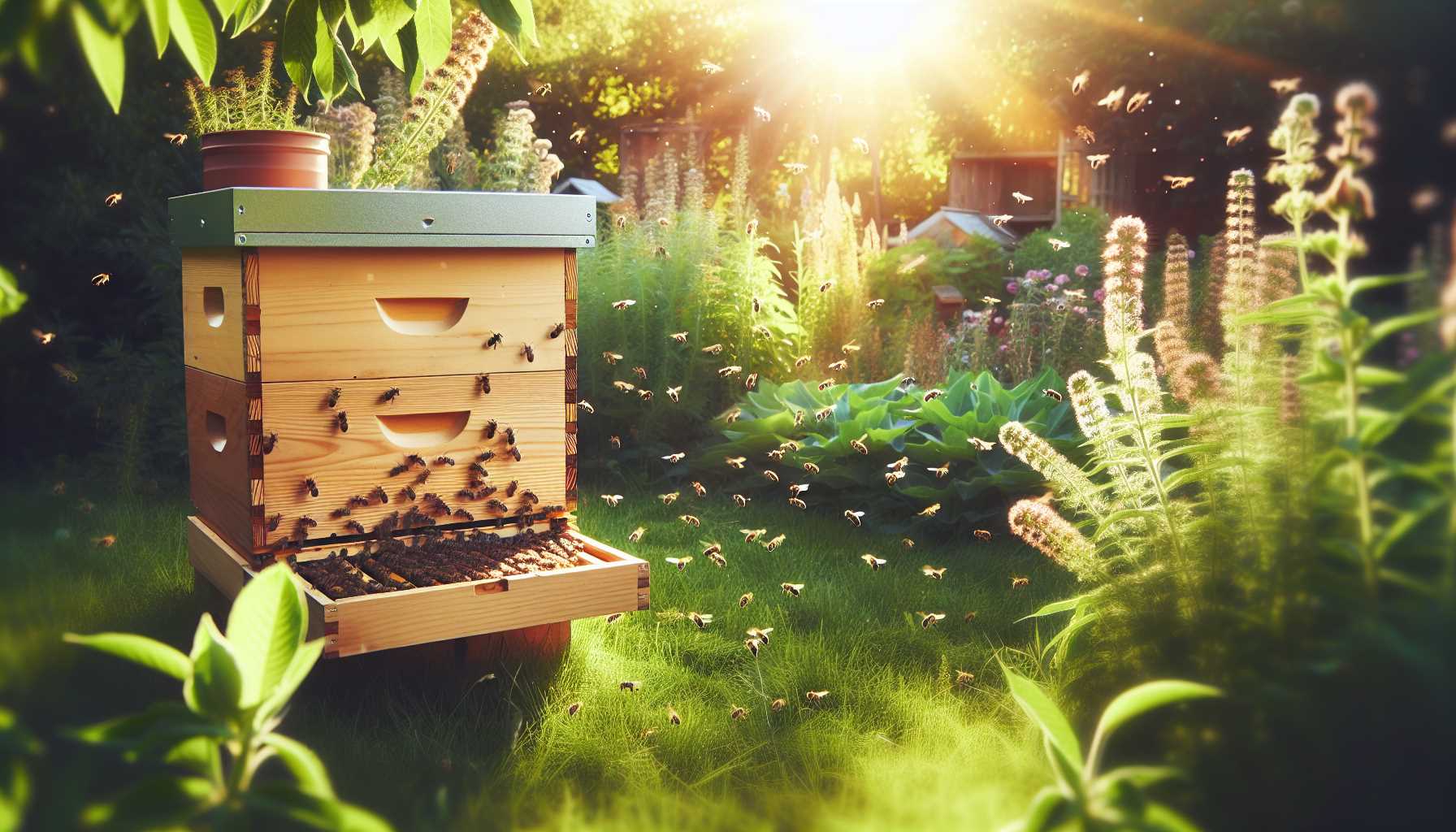
Strategically situating and diligently upkeeping beehives are fundamental aspects of successful beekeeping endeavors. When considering beehive positioning, it is crucial to choose a location that receives ample sunlight and is protected from strong winds. Additionally, beekeepers must take into account weather considerations, such as avoiding low-lying areas prone to flooding or places that may become too hot during summer months.
Regular hive inspection is essential for maintaining healthy colonies. Beekeepers should establish seasonal routines for thorough hive examinations, checking for signs of disease, pests, or a decline in bee population. During these inspections, it is vital to assess the overall hive condition, the presence of a laying queen, and sufficient food stores for the bees.
Identifying Common Beehive Issues
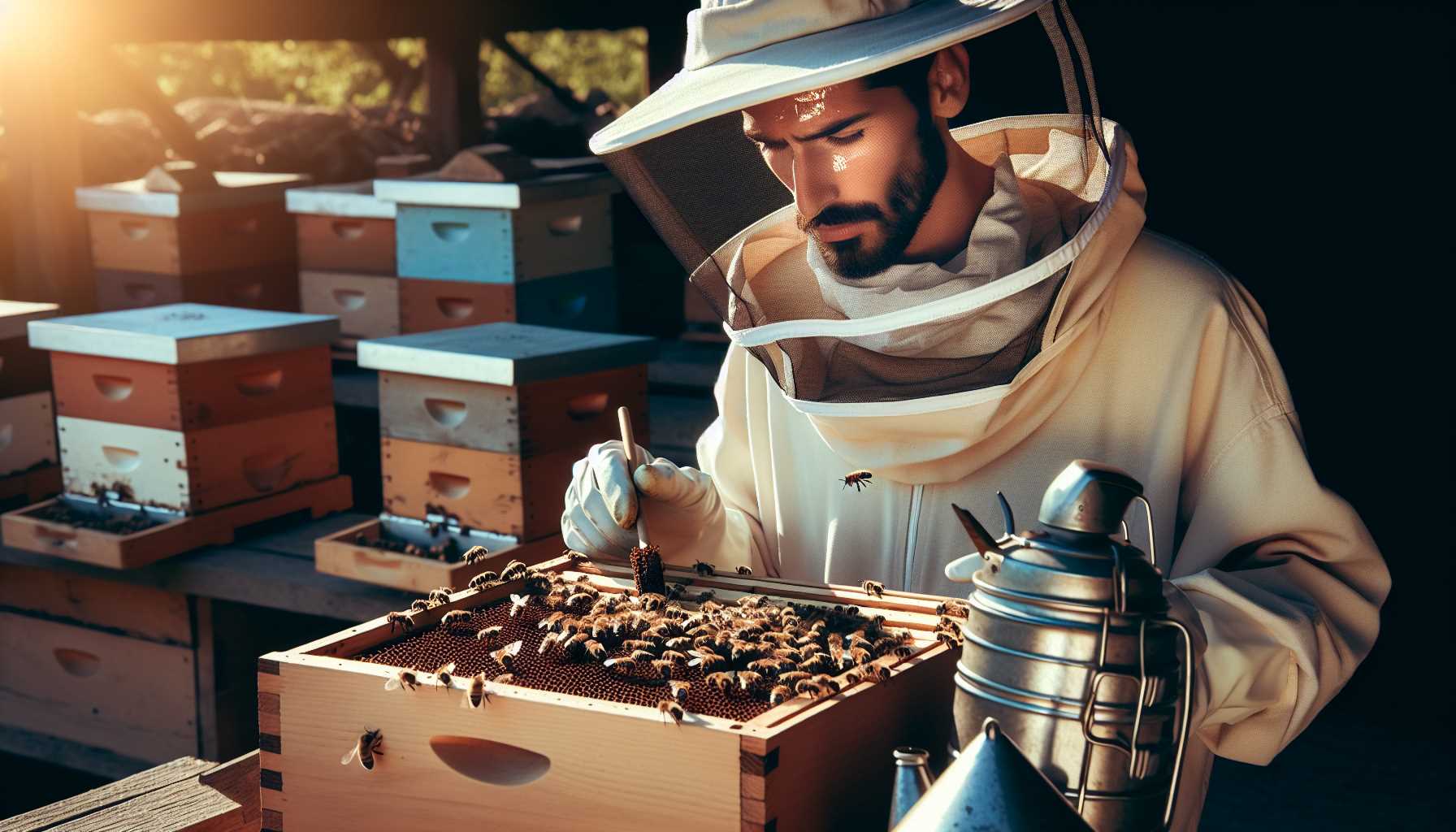
One critical aspect of successful beekeeping involves promptly identifying and addressing common beehive issues that may arise. As a beekeeper, staying vigilant through regular hive inspections is paramount to maintaining healthy colonies.
Here are some key points to consider:
- Swarm Prevention: Keep an eye out for overcrowding in the hive, as it can trigger swarming behavior. Ensure your bees have ample space by adding more supers or frames when necessary.
- Hive Inspection: Regularly inspect your hives for signs of disease or pests. Look for abnormalities such as unusual bee behavior, deformed wings, or strange substances in the hive.
- Pest Management: Implement effective pest management strategies to control common intruders like Varroa mites or wax moths. Consider using natural remedies or integrated pest management techniques.
- Disease Control: Be proactive in disease prevention by practicing good sanitation, proper ventilation, and regular colony health assessments. Stay informed about prevalent diseases in your region and take necessary precautions to protect your bees.
Frequently Asked Questions
How Often Should a Beginner Beekeeper Inspect Their Hive?
Regular hive maintenance is essential for beekeeper success. Observing bee behavior is key. Inspect your hive every 7-10 days, especially during peak activity in spring and summer. This routine practice ensures colony health and productivity.
Can Bees Be Kept in Urban Environments?
Beekeeping in urban environments is increasingly popular, with rooftop beekeeping and balcony hives being viable options. Community gardens also provide space for bees. Understanding urban beekeeping regulations is crucial for creating successful and harmonious apiaries in cities.
How Do Bees Communicate Within the Hive?
Bees communicate within the hive through fascinating methods. One interesting statistic is that honeybees use the "waggle dance" to convey information about food sources. They also release pheromone signals to coordinate activities and maintain hive harmony.
What Is the Best Way to Protect a Hive From Predators?
Predator prevention is essential for hive security. Utilizing natural deterrents like plants with strong scents or electronic monitoring systems can safeguard your bees. Understanding predator behavior and implementing proactive measures is key to hive protection.
How Can I Prevent Swarming in My Beehive?
Swarming prevention tactics are vital for beekeepers. Techniques like regular hive inspections, providing sufficient space, and managing queen health help discourage swarming. Implementing bee-friendly management strategies ensures colony strength and reduces the likelihood of swarming.

Roger Thomas is a seasoned beekeeper and hive architect with a deep-seated passion for sustainable living. His fascination with bees has shaped his professional career, giving him practical and theoretical expertise in bee behavior, colony health, and optimal hive conditions. Roger’s technical skills shine in his bespoke hive creations that cater to the specific needs of diverse bee species, while his sustainable practices promote environmental balance and the wellbeing of the bee population.
As he continues his journey in beekeeping, Roger has become a dedicated advocate for responsible practices and an insightful educator in his field. His posts aim to inspire new beekeepers, underline the importance of sustainability, and showcase the remarkable contribution bees make to our ecosystem. Roger invites you to join him as he delves into the world of bees and the rewarding, honey-sweet art of beekeeping.
